先看下这个问题的背景:假设有一个spring应用,开发人员希望自定义一个注解@Log,可以加到指定的方法上,实现自动记录日志(入参、出参、响应耗时这些)
package com.cnblogs.yjmyzz.springbootdemo.aspect;
import java.lang.annotation.ElementType;
import java.lang.annotation.Retention;
import java.lang.annotation.RetentionPolicy;
import java.lang.annotation.Target;
@Retention(RetentionPolicy.RUNTIME)
@Target(ElementType.METHOD)
public @interface Log {
}
然后再写一个Aspect来解析这个注解,对打了Log注解的方法进行增强处理
package com.cnblogs.yjmyzz.springbootdemo.aspect;
import org.aspectj.lang.JoinPoint;
import org.aspectj.lang.ProceedingJoinPoint;
import org.aspectj.lang.annotation.Around;
import org.aspectj.lang.annotation.Aspect;
import org.aspectj.lang.annotation.Pointcut;
import org.springframework.stereotype.Component;
import java.lang.reflect.Method;
@Component
@Aspect
public class LogAspect {
@Pointcut("execution (* com.cnblogs.yjmyzz.springbootdemo.service..*.*(..))")
public void logPointcut() {
}
@Around("logPointcut()")
public void around(JoinPoint point) {
String methodName = point.getSignature().getName();
Object[] args = point.getArgs();
Class<?>[] argTypes = new Class[point.getArgs().length];
for (int i = 0; i < args.length; i++) {
argTypes[i] = args[i].getClass();
}
Method method = null;
try {
method = point.getTarget().getClass().getMethod(methodName, argTypes);
} catch (Exception e) {
e.printStackTrace();
}
//获取方法上的注解
Log log = method.getAnnotation(Log.class);
if (log != null) {
//演示方法执行前,记录一行日志
System.out.println("before:" + methodName);
}
try {
//执行方法
((ProceedingJoinPoint) point).proceed();
} catch (Throwable throwable) {
throwable.printStackTrace();
} finally {
if (log != null) {
//演示方法执行后,记录一行日志
System.out.println("after:" + methodName);
}
}
}
}
写一个测试Service类:
package com.cnblogs.yjmyzz.springbootdemo.service;
import com.cnblogs.yjmyzz.springbootdemo.aspect.Log;
import org.springframework.stereotype.Component;
@Component
public class HelloService {
@Log
public void sayHi(String msg) {
System.out.println("\tsayHi:" + msg);
}
public void anotherSayHi(String msg) {
this.sayHi(msg);
}
}
最后来跑一把:
package com.cnblogs.yjmyzz.springbootdemo;
import com.cnblogs.yjmyzz.springbootdemo.service.HelloService;
import org.springframework.context.annotation.AnnotationConfigApplicationContext;
import org.springframework.context.annotation.ComponentScan;
import org.springframework.context.annotation.Configuration;
import org.springframework.context.annotation.EnableAspectJAutoProxy;
/**
* @author 菩提树下的杨过
*/
@ComponentScan("com.cnblogs.yjmyzz")
@Configuration
@EnableAspectJAutoProxy
public class SampleApplication {
public static void main(String[] args) {
AnnotationConfigApplicationContext context = new AnnotationConfigApplicationContext(SampleApplication.class);
HelloService helloService = context.getBean(HelloService.class);
helloService.sayHi("hi-1");
System.out.println("\n");
helloService.anotherSayHi("hi-2");
}
}
输出如下:
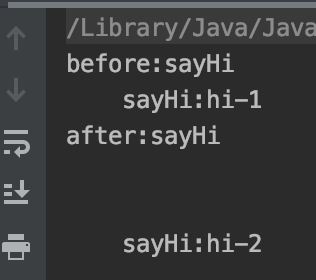
显然HelloService中的anotherSayHi方法,并未被aop增强。 原因其实很简单,了解AOP原理的同学想必都知道,AOP的实现有二类,如果是基于接口的,会采用动态代理,生成一个代理类,如果是基于类的,会采用CGLib生成子类,然后在子类中扩展父类中的方法。
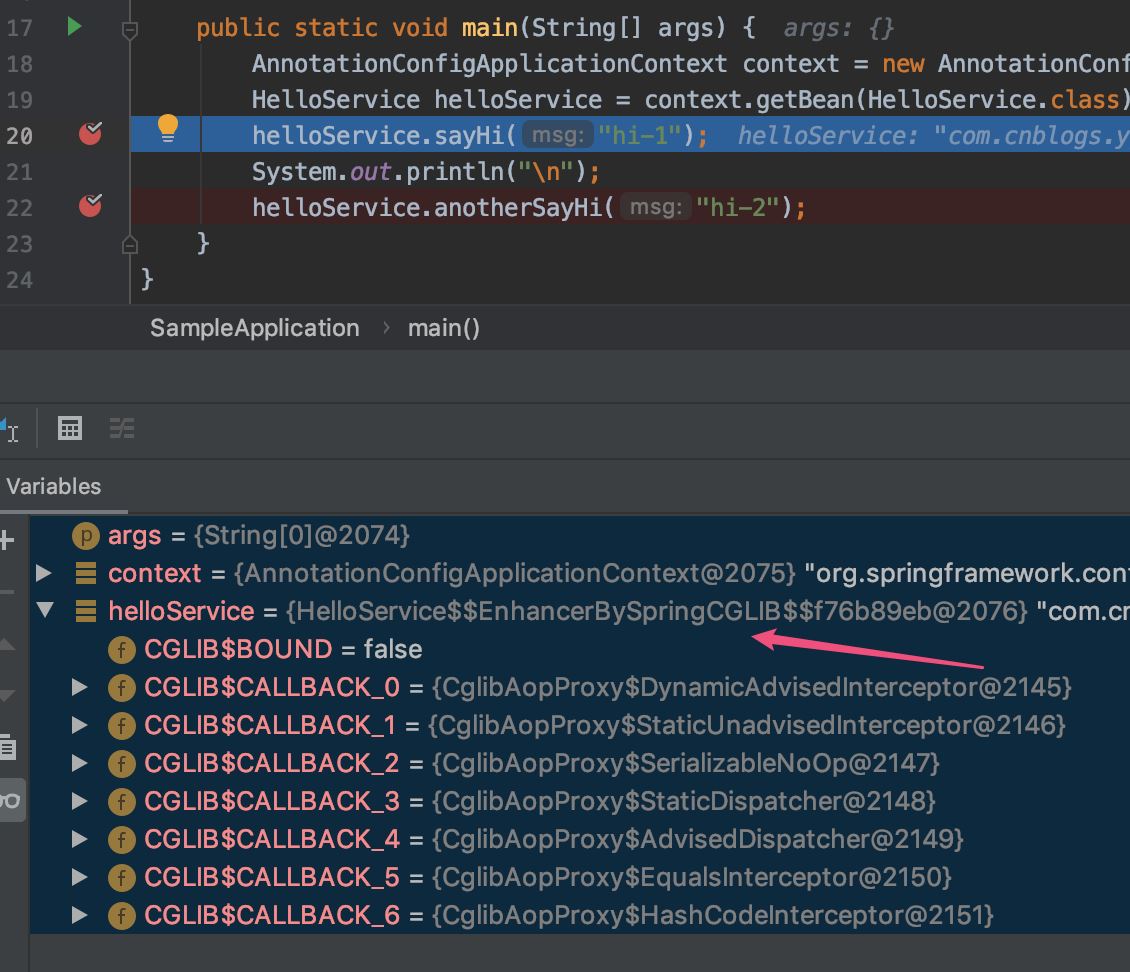
本文中HelloService并不是一个接口,所以从上图的断点中可以看出,当Spring运行时,HelloService被增加为...EnhancerBySpringCGLib...。但是当调用到anotherSayHi时
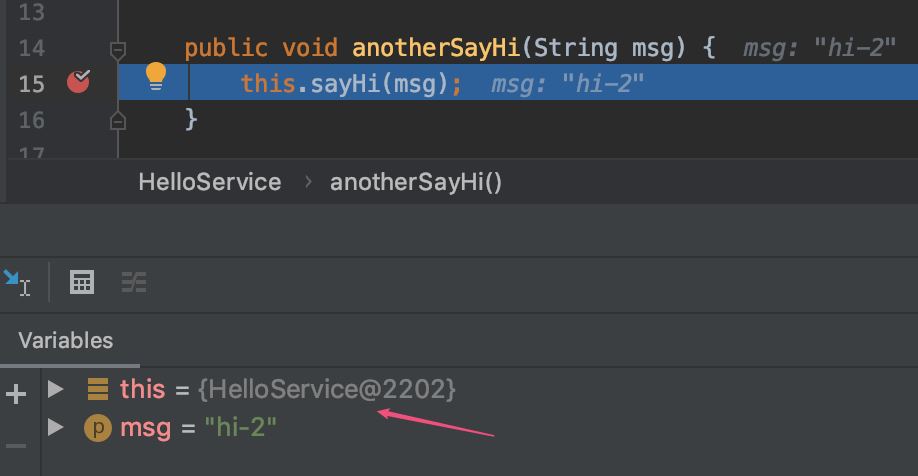
方法的调用方,其实是原始的HelloSerfvice实例,即:是未经过Spring AOP增强的对象实例。所以解决问题的思路就有了,想办法用增强后的HelloService实例来调用!
方法一:用Autowired 注入自身的实例

这个方法,第一眼看上去感觉有些怪,自己注入自己,感觉有点象递归/死循环的搞法,但确实可以work,Spring在解决循环依赖上有自己的处理方式,避免了死循环。
方法二:从Spring上下文获取增强后的实例引用
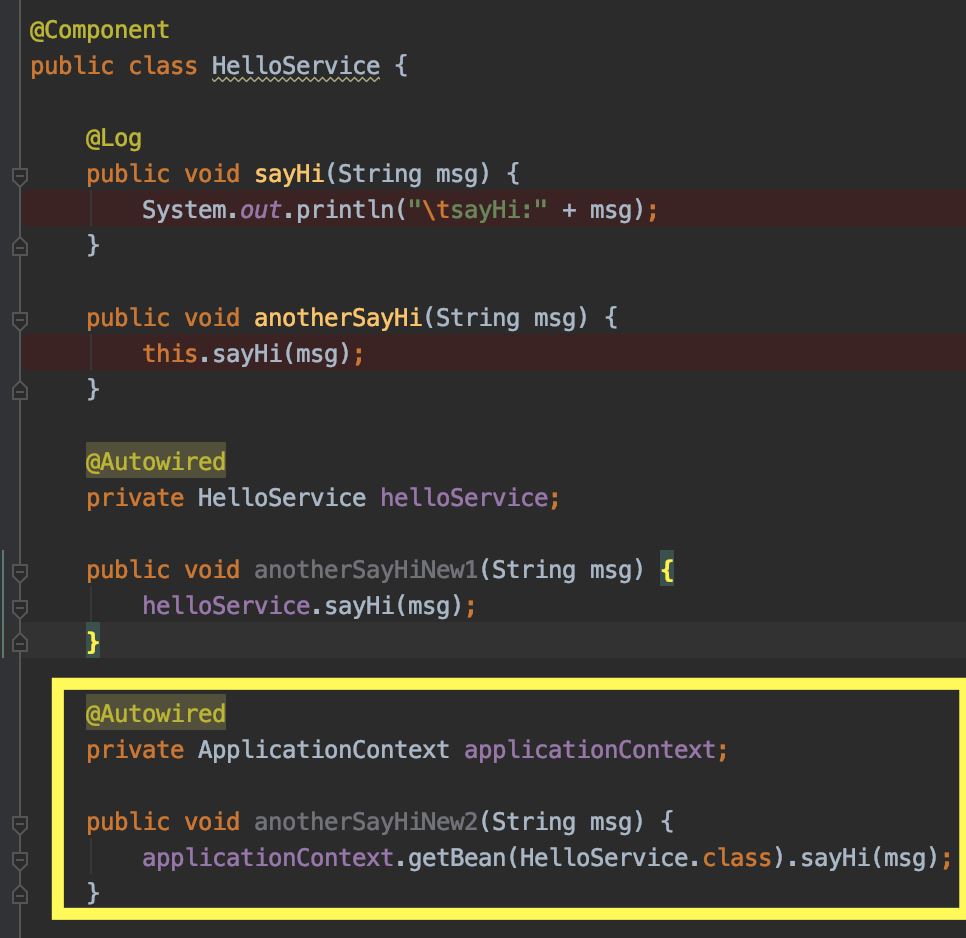
原理与方法一其实类似,不多解释。
方法三: 利用AopContext

不过这个方法要注意的是,主类入口上,必须加上exporseProxy=true,参考下图:
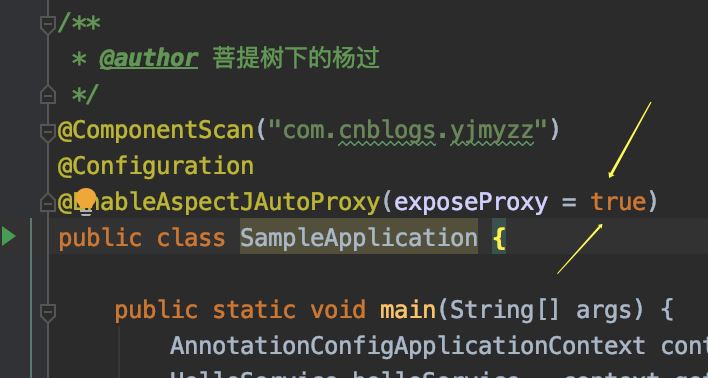
最后来验证下这3种方法是否生效:
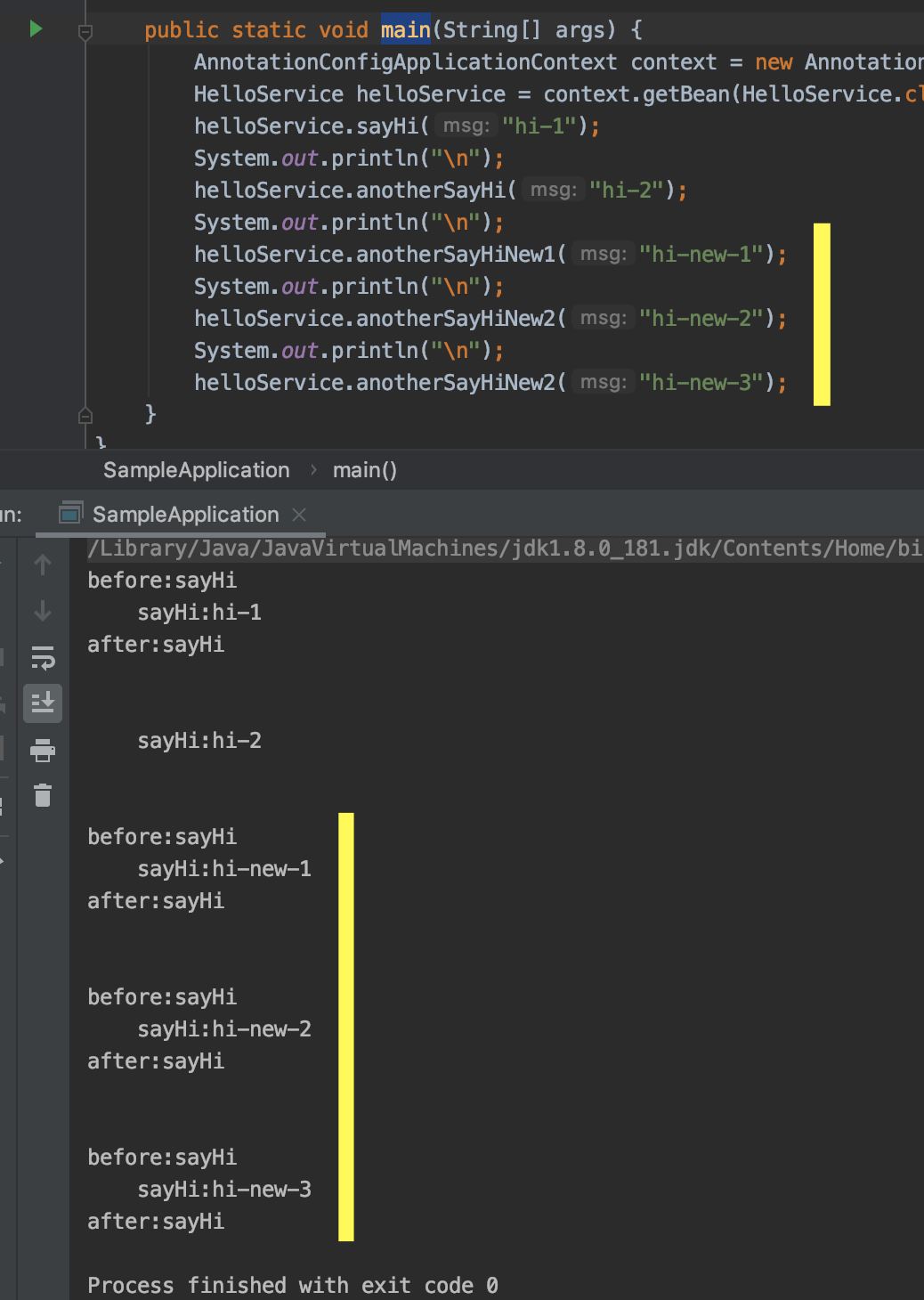
从运行结果上看,3种方法都可以解决这个问题。
到此这篇关于详解spring中aop不生效的几种解决办法的文章就介绍到这了,更多相关spring中aop不生效内容请搜索自学编程网以前的文章或继续浏览下面的相关文章希望大家以后多多支持自学编程网!
作者:菩提树下的杨过
出处:http://yjmyzz.cnblogs.com

- 本文固定链接: https://zxbcw.cn/post/189447/
- 转载请注明:必须在正文中标注并保留原文链接
- QQ群: PHP高手阵营官方总群(344148542)
- QQ群: Yii2.0开发(304864863)
